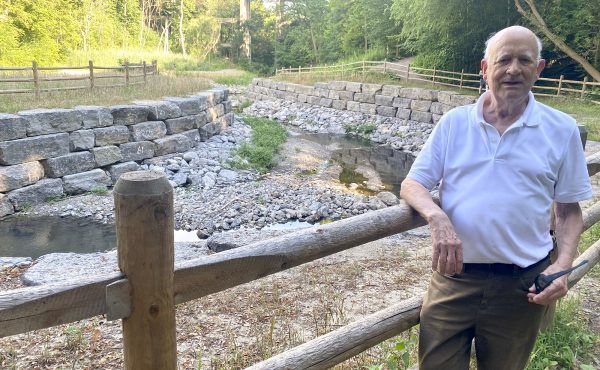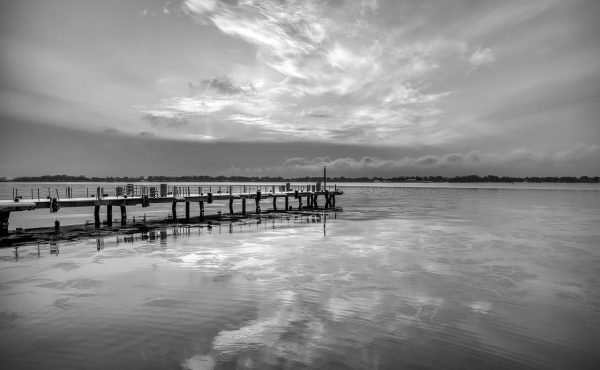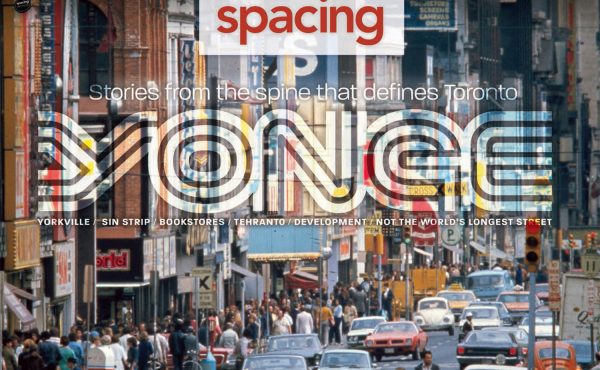Every Thursday, Spacing will bring you a snapshot of Toronto’s past, looking into what took place that day in the city’s history. Throwback Thursday will address how the city has evolved, with an emphasis on issues that remain relevant for development in Toronto today.
– – – – – – – – – – – – – – – – –
So far this summer’s weather has been nothing to brag about. Not like in 1936 when on this day, Toronto was in the midst of its greatest heat wave ever. An estimated 40,000 Torontonians flocked to the lakeside to escape another record-breaking day of 40 degrees Celsius (not including the humidex, which was invented in 1979).
“From the Humber on the west side, through Sunnyside Beach, Exhibition Park, Simcoe Park Beach, clear through to Kew Beach, Beaches Park and Balmy Beach, a sightseer could have found thousands of men, women and children barefoot and scantily clothed,” wrote the Toronto Daily Star that afternoon.
Sidewalks buckled and steel rail lines twisted as surface temperatures reached 65C, enough to bake fruit as hung from trees. Thousands spent the night sleeping on the grass in front of Exhibition Park to escape the stuffy heat of their homes, some bringing blankets, mattresses, pajamas and alarm clocks with them. Others avoided sleeping altogether, with younger adults and kids building bonfires on the beach, swimming, listening to their portable radios or playing guitar. For several nights, cops ignored the old by-law still in place at the time forbidding people from city parks by 10pm.
Not all Torontonians were enjoying the heat, however. The deaths of over 225 people – mostly seniors and young children – can be either directly or indirectly attributed to Toronto’s week long heat wave, with causes ranging from heat stroke to drowning. A ban was also imposed on watering lawns that day as the City of Toronto took on the added strain of providing water for the 38,000 residents of East York after Scarborough, East York’s water provider, had to cut them off due to insufficient capacity.
With the average Torontonian today using 253 litres every day, the city’s urban heat islands growing at a rate of 3% every year and climate change continuing to wreak havoc on our environment, increasingly hot urban temperatures may be one of the most pressing concerns facing cities. Luckily, as was made painfully obvious in 1936, “Toronto is a city dominated by water,” providing limitless opportunities to beat the heat that don’t involve blasting air conditioners or endless shower sessions.
With the Islands harder to reach and City-operated pools closed due to the strike, what lesser known city spots are you heading to this summer for relief?
Photos by Bobcatnorth and Gerry Chu







6 comments
Interesting. Thanks. My mother did similar up in ‘Lawrence Park’, which was as outer suburb in the 40s. Not so wealthy then: my mother’s family had six kids and one income (she still eats the fat and gristle on chicken, yuck).
On hot nights, when eight people could not sleep in a four bedroom house, they would take their bedding to the back yard, or to the local park. It was apparently the ‘done thing’. Her stories, and 2003’s power outage, have made me loath to live in a high rise ever again. If our summers get hotter, and power less reliable with energy shortages, a high rise is not where you want to be. Brick houses can cool somewhat at night with the windows open, but highrises are chimneys.
We need to be looking out for this future, and start working on the ‘low hanging fruit’: paint roofs white, plant endless hardy native trees, and start using permeable paving.
Fascinating stuff! I was just reading a Mike Filey write-up of the ’36 heat wave last night.
Although, no matter how smelly Toronto gets this summer with the strike, climate change will definitely wreak havoc, instead of reek.
“More startling still, around 400 Torontonians drowned while seeking relief from the weather.”
That’s so startling I can’t believe it. Please provide the source for that factoid – it just doesn’t sound right at all. Mere increases in numbers of people bathing could not possibly account for such a wild number of deaths from drowning in one city in a brief period of time.
Hi David,
I apologize, really sloppy writing on my part. I had two sources for those numbers, one of which I must have read to fast. I have changed the line and linked to the source I am using, the Canadian Encyclopedia.
http://www.thecanadianencyclopedia.com/index.cfm?PgNm=TCE&Params=A1ARTA0010739
My second source, a CBC article, uses similar numbers but is far less specific in attributing those deaths, so it is probably the one from which I made my mistake:
http://www.cbc.ca/news/background/forcesofnature/extreme-heat.html
Much better! Thanks so much for taking the time to make the correction.
My Grandfather used to talk about this heat wave. He also said that fruit would bake on the trees, although we didn’t believe him. Now, maybe I do.
Tom